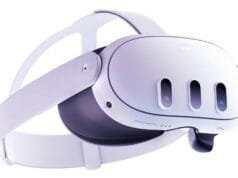
The virtual reality landscape has been evolving rapidly, and Meta, formerly known as Facebook, has been at the forefront of this evolution. With the recent release of the Meta Quest 3, many are left wondering how it stacks up against its predecessor, the Meta Quest 2. Both devices have their merits, but which one truly stands out?
Key Highlights:
- Meta Quest 3 is more powerful but also pricier than Meta Quest 2.
- Quest 3 supports mixed-reality experiences, a significant leap from Quest 2’s immersive VR content.
- Quest 3 is slimmer, thanks to advanced optics and design changes.
- The new device boasts a higher resolution display and improved controllers.
- Despite the advancements, Quest 2 remains a viable option due to its reduced price.
The Meta Quest 3 has made its grand entrance, boasting significant enhancements over the Meta Quest 2. Notably, it’s more powerful, but this power comes with a higher price tag. The Quest 3 is a testament to Meta’s commitment to pushing the boundaries of virtual reality. It’s not just a minor upgrade; it’s a leap forward. The device is sleeker, with a noticeable slimness and additional hardware gracing the front of its visor. However, with power and design improvements comes a heftier price. The starting price for the Quest 3’s 128GB model is $499, a stark contrast to the Quest 2, which has seen a price drop recently.
Design Evolution:
The Quest 3, despite its advancements, bears a resemblance to the Quest 2. But a closer inspection reveals significant differences. The Quest 3 is 40% slimmer, a feat achieved through the use of pancake optics. This technology allows for high-resolution lenses in compact spaces. Additionally, the Quest 3 introduces a new camera array on its visor, comprising dual 4MP RGB color cameras and an intermediary depth sensor. This setup not only provides a more accurate representation of the user’s environment but also facilitates full-color video passthrough.
Display and Performance:
When it comes to display, the Quest 3 outshines its predecessor. It features an LCD display with a resolution of 2064 x 2208 pixels per eye and a refresh rate of 120Hz, which Meta has dubbed its “4K+ Infinite Display.” This is a significant improvement over the Quest 2’s 1832 x 1920 per eye resolution.
Controller Upgrades:
The Quest 3 introduces the “Touch Plus” controllers, a departure from the iconic tracking ring of the Quest 2 controllers. These new controllers are sleeker and more in line with the Quest Pro’s controllers. However, they lack the Pro controller’s cameras, raising some concerns about potential tracking issues.
In Conclusion:
The Meta Quest 3 is undeniably a formidable contender in the VR arena, with its advanced features and improved design. However, the Meta Quest 2, with its recent price reduction, remains a strong choice for those looking for a balance between performance and cost. The choice between the two boils down to individual preferences and budget constraints. But one thing is clear: Meta continues to redefine the boundaries of virtual reality, ensuring an immersive experience for its users.










